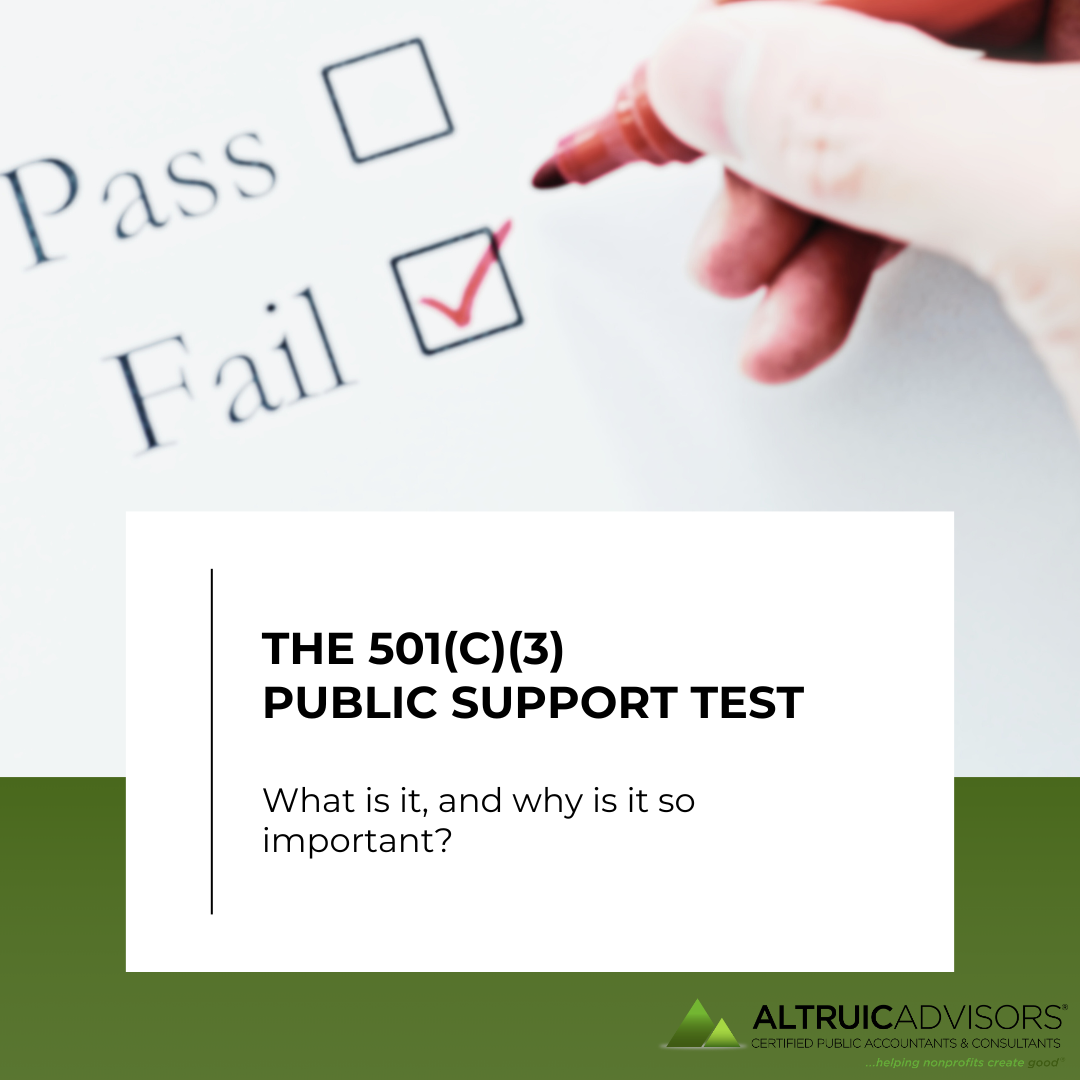There are two main types of 501(c)(3) nonprofit organizations – public charities and private foundations. Public charities usually have a diverse pool of donors and receive support from a wide swath of the general public. Private foundations, on the other hand, receive most of their support from only a select few donors.
To be classified as a public charity by the IRS, you must pass a “public support test.” The most common test requires at least one-third (33.3%) of your support to come from the general public. This may sound simple, but like most IRS requirements, it’s more complicated than it seems. For example, you can only count donors who contributed less than 2% of your total support. Other types of contributions may need to be excluded as well, which may cause a significant drop to your overall ratio of public support.
This ratio is calculated on a five-year cumulative basis, a rolling total of all income received within the past five years. New organizations typically receive a free pass for first five years of their existence. However, beginning with your sixth tax year, you must pass the public support test. With this in mind, it’s absolutely critical to monitor your ratio of public support during the early years of your organization’s existence. The last thing you want is for year six to roll around, and suddenly you have a very large problem and limited time to fix it.
If you fail the public support test, you do get a second chance. The IRS will allow you one more year to bring your ratio up. Again, keep in mind that this is a five-year cumulative ratio. If you spent four years at 20% public support then increased to 50% public support in year five, that’s still not enough to bring your overall ratio above of 33.3% for all five years added together.
What happens if you fail the public support test two years in a row? In a nutshell, you will lose your public charity status. The IRS will reclassify your organization as a 501(c)(3) private foundation. Private foundations are subject to stricter regulations and oversight, with many additional tax implications. You may lose grant funding or other sources of support that you are no longer eligible for. Tax deductions for contributions to private foundations are also more limited than donations to a public charity. If your organization was not originally intended to operate as a private foundation, this reclassification can be very difficult to navigate and can have a devastating impact on your operations.
While it is possible to regain your public charity status after failing the public support test, it’s a long road back. The best way to avoid losing your public charity status is to closely and carefully monitor your ratio of public support over time. Given the complexity and far-ranging consequences of this calculation, we strongly recommend consulting with a tax professional.


